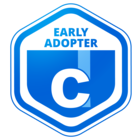Has anyone used an API for integration with Workday and knows of advantages of using an API rather than the Docebo Automation Application?
Question
Workday Integration - API vs Docebo Automation App
Log in to Docebo Community
Enter your email address or username and password below to log in to Docebo Community. No account yet? Create an account
Docebo Employee Login
or
Enter your E-mail address. We'll send you an e-mail with instructions to reset your password.









